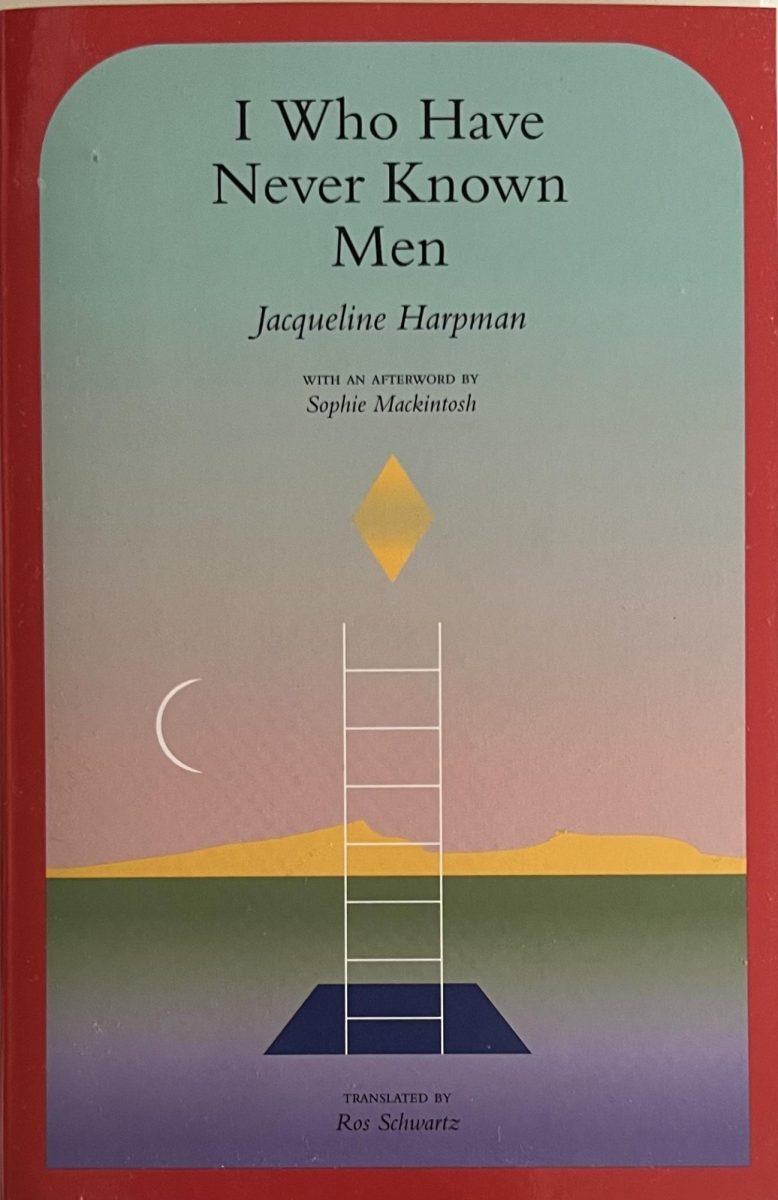“I Who Have Never Known Men” by Jacqueline Harpmen is a unique dystopian novel that evokes a sense of wonder and mystery from the first page to the last. Alongside being an intriguing narrative, the story also questions the purpose of life and contemplates the relationships formed with the people in someone’s life. Originally published in French as “Moi qui n’ai pas connu les hommes” in 1995, it was then translated by Ros Schwartz.
The story follows forty women who are locked in a continuously guarded cage. None of them remember exactly how they came to be in this cage, just that one day as they were going about their normal lives, anarchy broke out and they awoke in the cage. They were drugged in the beginning, and as time went on and their doses became less and less, they found themselves unable to say for certain how long they had been in the bunker and how they fell into the monotonous routine they lived their lives by. The cage was always patrolled by male guards who walked in groups of three, armed with whips, which the women–while they were in their drugged state–had been conditioned to fear above anything else and be obedient towards. The women were given food to cook their meals twice a day and fabric and materials to make their own clothing when needed.
The story is told by the youngest woman, who was still a child when they were first put in the cage, so young she has no memories of the world prior to the cage, not even of her own name and as such is called just “the child” by the other women. The story starts when the child is around 15 years old, though they have no way of knowing any of their ages for certain. The child is telling the story directly to the reader, and there are no chapters or breaks in the book. It’s a continuous story, but it all flows naturally and Harpman does a wonderful job of smoothly shifting from one topic to another, all of it relevant and connected. Though there are no chapters, there are still natural breaks within the story that give the reader a chance to step away from the book without feeling lost when they pick it back up.
One day, as the guards were opening the cage to deliver the food to the women, an unexpected siren went off. The guards immediately rushed off, leaving the women alone for the first time in years, and the keys in the cage door. The child grabbed the keys, opened the cage, and ran out, followed by the other 39 women, some much more hesitant than others. They discover they’ve been underground this entire time, their bunker connected to a small cabin in the middle of nowhere. The elation and relief the women felt at finally escaping the bunker was quickly overshadowed by the fear that the guards were going to come back and either hurt them or force them back into the cage, but the guards were nowhere to be found. Not much time had passed between the guards leaving and the women escaping the bunker, but there was so sign of the guards–or any other living person, for that matter–to be seen anywhere.
The child, having been raised in a bunker, is a very odd character, but it makes the story that much better. There are many things that the child can see and comment on that a regular person would not be able to think of or expand on because of her unconventional childhood and overall life. It is a testament to Harpman’s abilities that she is able to write a character like that, because it doesn’t feel forced or overdone, and while everything is abnormal about the story, the child and her reaction to the world around her feel very natural, earning this novel a 5/5.







